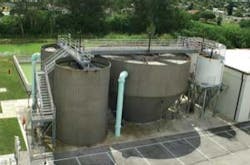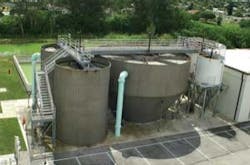Emerson forms design institute to drive ease of use into new product development
• Reversing the Master/Servant relationship between technology and people will reduce product complexity and improve productivity
ORLANDO, FL, Sept. 28, 2009 -- Signaling an important change in technology trends, Emerson is making process control technology easier to use with its introduction of the Human Centered Design Institute. This announcement culminates more than 5 years of customer work-practice analysis, new product development re-engineering and organizational training. The goal is simple: make products that are not only reliable, compatible and cost-effective, but also bring about a significant improvement in ease-of-use and workforce productivity.
Emerson Process Management demonstrated its commitment to Human Centered Design (HCD) and reduced product complexity with this week's announcement of its new DeltaV™ S-series digital automation system hardware, and more than 50 new field Device Dashboards.
"We observed that customer project engineering and design processes across the industry put too much emphasis on locking down designs very early in the project, often before the process design was complete," noted Zornio. "Not only does this increase FEED and Detailed Design cost and time, it also exposes the project to increased labor and potentially significant change order costs during construction. Additionally, the existing wiring processes were time consuming and laborious…and ripe for an innovative approach."
With the new DeltaV S-Series of hardware, customers and Engineering Contractors can have unprecedented flexibility in I/O engineering thanks to Electronic Marshalling. Hard-wiring each device as a unique connection from field to controller and every contact in between is eliminated. This means less engineering up front and fewer change orders later in the project. This could revolutionize I/O and project engineering.
Emerson also turned its attention to day-to-day operations, focusing on the repetitive tasks operators and maintenance staff perform and how they interface with field devices.
"We evaluated device interfaces across the industry and found a common problem," said Zornio. "Routine steps which operators and maintenance personnel perform frequently were cumbersome, confusing and illogically laid out. It's an endemic problem throughout the industry. Based on user input, we have overhauled Emerson's Device Dashboard designs to improve speed and accuracy of confidently performing these tasks."
The primary goal of Emerson's Human Centered Design Institute is to ensure that user work practices and improved task completion (usability or workforce productivity) are at the heart of every new product that Emerson introduces.
"There is a demographic paradox facing the industry," said Zornio. "In mature markets, knowledgeable workers are retiring. In emerging markets, finding knowledgeable and skilled workers is very difficult. By putting increased emphasis on ease-of-use, we can meet this demographic challenge head-on and simply make it easier to extract value from technology investments."
"We've been incubating this HCD process since the early days of our Smart Wireless designs some years ago, collaborating with Carnegie Melon University, a recognized leader in human interface and interaction with technology," said Duane Toavs, director of Emerson's Human Centered Design Institute. "CMU helped us set direction and get it started, leading to our staffing of this virtual Emerson Human Centered Design Institute that spans design teams for all of our brands."
Human Centered Design is a multi-disciplined science. User Personas, Stakeholder Maps, along with intensive observational research, usability testing and heuristics analysis are key elements of the practice. They provide the insight to blend the disciplines of Industrial, Graphical and Human Interface design into products which are easier to use.
"Getting inside the heads of users, including how they interface with each other and the technologies, is the foundation of Human Centered Design," continued Toavs. "Based on interviews with more than 100 customers, we developed Personas and Stakeholder Maps which help us define the ecosystem of a plant. This includes how those users interact with technology, and how the design of those products affects their productivity. Simple in theory, but really challenging in practice. The products Emerson will introduce based on this and ongoing research will make a profound difference in how people accomplish their tasks."
"We believe Emerson is uncovering an untapped resource that will lead to increased productivity throughout the process manufacturing industry," said Chris Pacione, director of education at MAYA Design and LUMA Institute. "While they continue to deliver powerful new technology, Emerson's investment in HCD represents a major commitment toward taming the complexity inherent in these new products. It's an important commitment. This kind of focus on human centered design will enable more useful and usable solutions and invite Emerson customers and users to be co-inventors of the future of their work, rather than just waiting for it."
About Emerson Process Management
Emerson Process Management (www.emersonprocess.com), an Emerson business, is a leader in helping businesses automate their production, processing and distribution in the chemical, oil and gas, refining, pulp and paper, power, water and wastewater treatment, mining and metals, food and beverage, pharmaceutical and other industries. The company combines superior products and technology with industry-specific engineering, consulting, project management and maintenance services. Its brands include PlantWeb®, Syncade™, Fisher®, Rosemount®, Micro Motion®, Daniel®, DeltaV™, Ovation®, and AMS® Suite.
About Emerson
Emerson, based in St. Louis, Missouri (USA), is a global leader in bringing technology and engineering together to provide innovative solutions to customers through its network power, process management, industrial automation, climate technologies, and appliance and tools businesses. Sales in fiscal 2008 were $24.8 billion and Emerson is ranked 94th on the Fortune 500 list of America's largest companies. For more information, visit www.Emerson.com.
###

